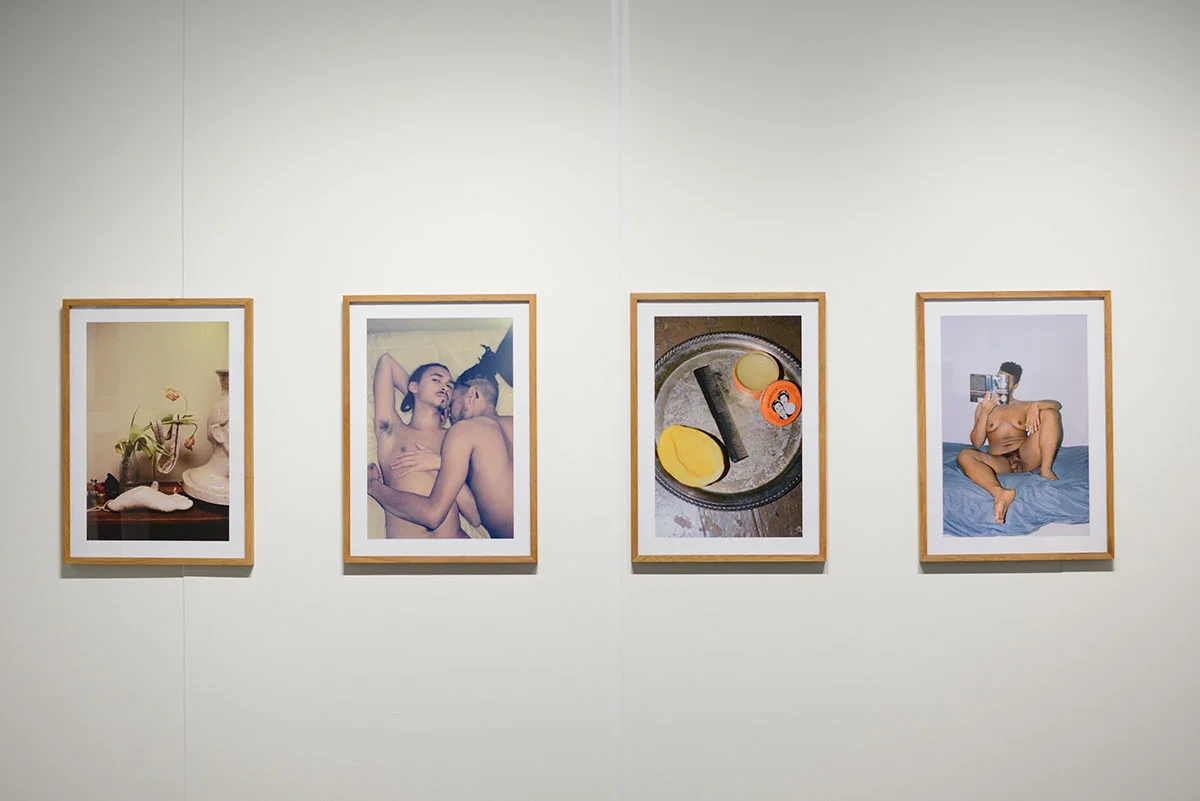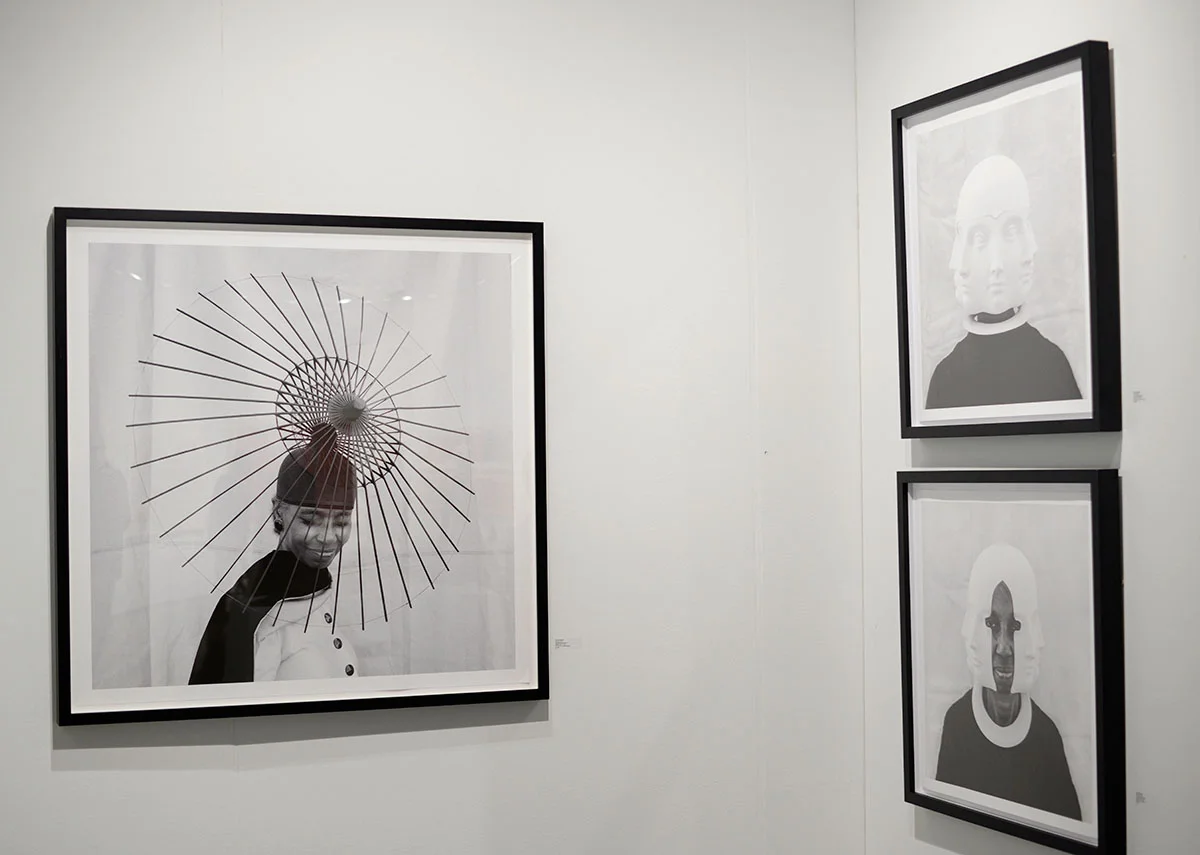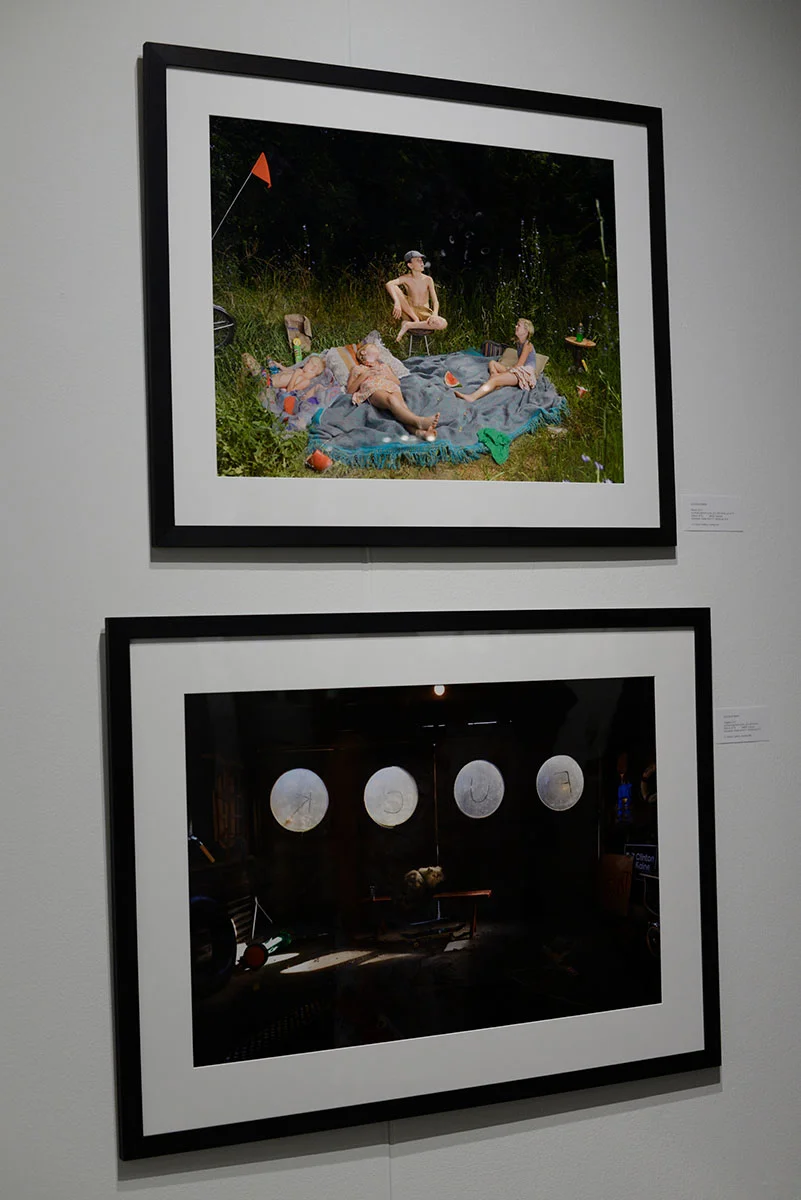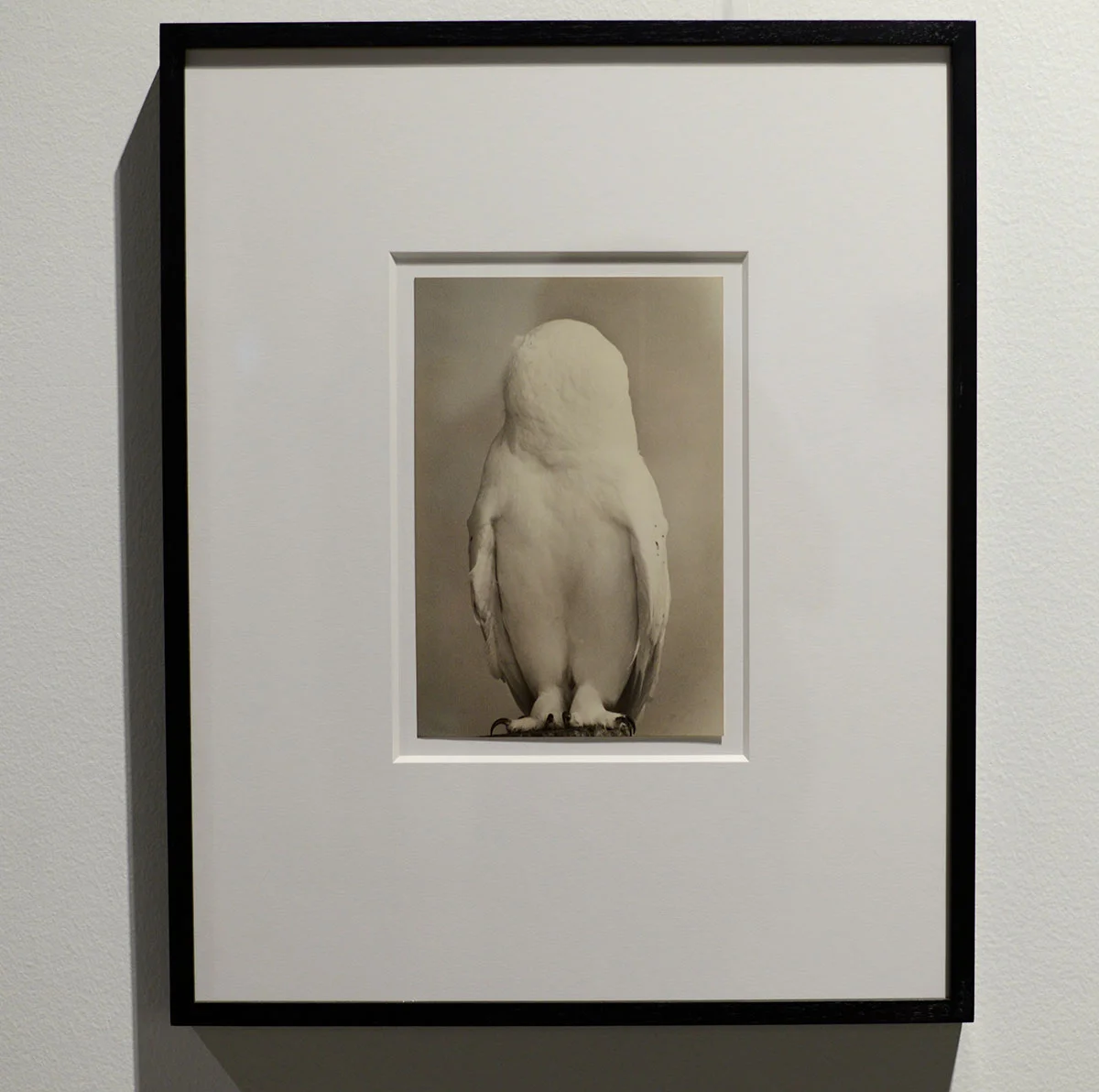The Imprint, 2010. © Niloufar Banisadr
The Seattle Art Fair returns this year with a strong overall program and consistently compelling photography-based work.
Yes, I know – hyperbolic headlines are a bit rich. I wrote this one a bit hesitantly after missing last weekend's Seattle Emerging Art Fair – a one-night popup exhibition at Canvas Space which I, unfortunately, learned about too late. So much for being on the pulse of art in a tech-drenched city. I digress and ramble on...
I'm also quietly mourning the (hopefully temporary) departure of Seattle's famously "more punk" biennial on-ramp "Out of Sight." There are rumors circulating about what caused this, but the general talk and suspicions center around gentrification and concrete-condo-jungle real estate boom making art space less affordable. Let's hope it returns next year.
Digressing again.
As sad as Out of Sight's departure is, The Seattle Art Fair - open through Sunday, August 5th at 6pm, continues to improve and impress, especially around photography. Now in its fourth year, it's become an annual tradition for Humble to highlight some of the fair's photo-related standouts, so here goes. If you're in the area, be sure to check these out and be ready to liquidate your bank account on work ranging from hundreds to tens of thousands of dollars.
Without further ado...
Niloufar Banisadr @ 55 Bellchasse (Both J17)
From her statement: Beyond the diversity of shapes, colors or textures, these towels tell their own story. They are photographs of the imprints of unclad and unrestrained bodies. Heavy, light, lively or busy, these bodies rise, move away and leave their imprints. In their grooves and furrows, the curbs of their folds memorize a posture, feelings, emotions, between presence and absence; just the time to bathe.
Imprint 4 © Niloufar Banisadr @ 55 Bellechasse Gallery
Carlos Colin @ Fazakas Gallery
From the artist's website: Carlos Colín was born in Guadalajara, Mexico in 1980. Colín’s research investigates how contemporary art, artists, and art institutions are involved in current social movements and, by extension, how art contributes to social change and social activism in Latin America. As a Latin American artist using a range of media, Colín brings perspectives on the discourse of how art evolves inside societies, how it finds expressions, how it changes over time, and the implications this has for Latin America.
Mascara, 2014 © Carlos Colin. @ Fazakas Gallery.
Clifford Prince King, Teresa Christiansen, Evan La Londe, and pretty much everyone showing at Melanie Flood Projects
Clifford Prince King is a self-taught photographer from Tuscon, Arizona. He's now based in Los Angeles and makes photographs which document and explore life from a black queer perspective. His first solo exhibition Colors So True was presented this spring at Melanie Flood Projects and we hear is sold (or came very close!)
Clifford Prince King @ Melanie Flood Projects
Teresa Christiansen: (From Portland Art Museum curator Julia Dolan's 2016 wall text): "Trained as a painter and a photographer, Teresa Christiansen thinks critically about the messages embedded in artistic depictions of the landscape. She pushes against the interpretation of a photograph as a conveyor of fact, offering up each of her pictures to conceptual consideration through sculptural treatment. By physically manipulating her prints, she reminds viewers that the camera-made image is not a truthful or exact mirror image of the world, but rather an illusion that is mediated by both artist and camera."
Teresa Christiansen False Angel, 2017 @ Melanie Flood Projects
Evan La Londe's Sundials is an exhibition of photographs that record the motion of the sun by capturing a multitude of colors and light as it reflects off a simple shadow casting object built in the artist’s studio. Shifting forms of daytime shadows and changing values of light are registered by a digital sensor. Observing light and shadow on a screen in an inverted state, La Londe renders these moments with flashe and tempera, which leave evidence of brush-strokes and accidental drips of paint. Mistakes are made, and these artifacts reveal the materiality of shadows and their sensory impressions.
His paintings are stand-ins for the photographic negative, and their image is also printed like an analog negative would be: photographed with a camera, inverted in Photoshop, and printed as pigment-based inkjet prints, at a 1:1 scale of the paintings they depict. These new images appear as “positives,” (which we often forget all photographs are), but become uniquely distorted and altered through their making.
Evan La Londe @ Melanie Flood Projects
Katherine Simóne Reynolds and Dario Calmese at Projects+ Gallery (Booth E01)
Saint Louis based Katherine Simóne Reynolds' performance based photography series and video Optical Doubles, on the Binary takes inspiration from the primarily English term 'double star,' which is used to describe pairs of stars that are seen to be close together in the sky. These double stars may be binary systems or may merely appear close together, despite having vastly different true distances from the Sun. The latter are also termed optical doubles. The two subjects of this work, Ayo and Moyo Akinsete are not twins. They are brothers whose dynamic is somewhat disorienting if gazed upon for too long. Through a very distant lens, a stranger cannot differentiate the older from the younger, but the gravitational pull of brotherly affection is there, masked in a competitive air.
© Katherine Simone Reynolds @ Projects+ Gallery
Dario Calmese treats photography as architecture. He uses film as a blueprint of sorts, constructing narratives that move past Barthes’ past-looking “a symbolic death” to construct a more generative image – moving from the past to the present and potential futures. The artist states that his blackness, queerness, and Americanness inform his gaze, each taking turns as narrator and sometimes performing in fugue. Calmese's series Amongst Friends is a series of black and white photographs and selected fashion objects from the private collection of Lana Turner, a noted Harlem preservationist and doyenne of style whose extensive inventory of vintage fashion can be understood as an archive of twentieth-century society and a reflection of the role of fashion in the history of African-American culture.
© Dario Calmese @ Projects+ Gallery
Mark McNight at James Harris Gallery (Booth C09)
In his latest work - bleak, darkly printed black and white photographs, Mark McKnight conflates desire, self-reflection, and what he jokingly refers to as a “pathological empathy for inanimate objects.” Through posture and quality of print, the identities and information to which we are typically entitled by photography are deliberately obscured. The men pictured are at once archetypal, even heroic in nature's grandeur while simultaneously appearing anonymous or even abject. In the artist's corporeal world, a ripped bag is registered as a soft body. Emerging gravel uncannily resembles animal entrails. In “Seeds,” an otherwise straightforward photograph, their significance is accrued by the photograph's title - it invokes the poem from which the show's title is derived (“If I never see my seminal seed..”) and by proxy, the erotic body.
© Mark McKnight @ James Harris Gallery
Lisa Kokin @ Allan Stone Projects (Booth H07)
Lisa Kokin is best for her collages and assemblages. Using found or recycled objects from everyday life such as books, photographs, buttons, clothing, and other ephemera, Kokin subverts common objects into fantastical and mysterious creations. Her act of decontextualizing objects from their original purpose seeks to dismantle the viewer's preconceptions about the status quo.
© Lisa Kokin. Circumstances Beyond Our Control, 1996 Hand Collages Found Photographs @ Allen Stone Projects
Julie Blackmon at G. Gibson Gallery (Booth F19)
I'm a longtime fan of Blackmon's series Homegrown - photographs of her friends and family cast into strange, funny and heartwarming tableaus that capture the tensions of everyday life. Her work grabs me every time I look at it. But I hadn't seen Trapped – a photo that speaks with pain, frustration, and a little bit of humor to our current political climate – until last night at G. Gibson's booth. This takes my pension for art-legit cat photos and Blackmon's work to a new level.
Trapped, 2017 © Julie Blackmon @ G. Gibson Gallery
Julie Blackmon @ G. Gibson Gallery
Prince Gyasi @ NilGallery (Booth F27)
Born in 1993 ,Prince Gyasi is a Ghanaian iPhone Photographer, living in accra.
From the gallery: "For the Artist, Art is not a solace, art is a great matter, art is an organ of human life transmitting man's reasonable perception into feeling. 'I noticed whenever I am in the act of creating, my mind runs wild and deep!' "
Prince Gyasi @ Nil Gallery
Ellen Carey @ Heather Gaudio Fine Art (booth J15)
Ellen Carey, who critic Lyle Rexer called "one of the country's most committed experimental photographers," has been experimenting with photographic process since the 1970s, with a particular focus on Polaroid film and cameras. One featured work, Caesura, is part of a series of recent photograms. Carey creates these in a light-tight darkroom by first creasing and bending the paper and then exposing the desired section to a colored filtered light. Repeating this several times before flattening and processing the photogram, creates a vibrant work with colors overlapping and pooling across the paper. The final image is a unique work of photography in a palette rooted in Carey’s oeuvre; RGB, Yellow, Magenta, Cyan. Also included is a photograph from Carey’s “Pull’ series. It is a lens-less image created with Polaroid’s 20 X24 camera by manipulating specially made emulsion color pods. The Polaroid paper has a positive/negative which are mirror images of each other. These prints are cold-pressed mounted which brings the focus to the prints and adds to the lustrous nature of the work.
© Ellen Carey @ Heather Gaudio Fine Art
William Eggleston @ David Zwirner
Do we even need an introduction to William Eggleston? Hadn't seen this glorious photograph before, tho!
© William Eggleston @ David Zwirner
Joe Rudko @ Davidson Gallery (Booth D09), PDX Contemporary (Booth C 17) and Greg Kucera(Booth A17) Galleries
I haven't fully researched this, but Seattle-based Joe Rudko is very likely the only artist at the Seattle Art Fair being shown by three galleries! And he's under 30. Not that age matters, but it's still pretty impressive for the artist who, born the year Photoshop came out, has been meticulously churning out stellar collages make new memories from old discarded photographs. We've featured him in a few of Humble's online group shows and continue to be excited by his continuously moving career.
© Joe Rudko (at Davidson Gallery)
Terri Loewnthal at CULT Aimee Friberg Exhibitions (booth C05)
Terri Lowenthal's work captured me when Humble's senior editor Roula Seikaly profiled her exhibition at CULT Aimee Friberg Exhibitions in San Francisco earlier this year. Her latest series Psychscapes dives into the intersection of landscape and psyche, the sublime expanse of land and sky romanticized in the still-potent mythology of Utopian California. Psychscapes are single-exposure, in-camera compositions that utilize special optics developed by Loewenthal to compress vast spaces into complex, evocative environments. These photographs combine straightforward landscape photography with explorations into the psychology of perception.
Terri Lowenthal at CULT Aimee Friberg Exhibitions
Masao Yamamoto @ PDX Contemporary (booth C17)
From the publisher of his 2017 monograph w/ Radius Books: As a small boy growing up in the Japanese countryside, photographer Masao Yamamoto enjoyed looking up at the sky. From his classroom window, he would gaze at the windblown clouds, mesmerized by airborne creatures such as birds, butterflies and winged insects. He sometimes dreamed of riding on the back of a bird and flying away to faraway places.
Yamamoto’s career as a photographer began in 1993. One of Japan’s most important living photographers, Yamamoto has taken many different approaches to photography over the past 20 years. But what has remained constant is the artist’s belief that humans are just a small part of nature, united with it and part of it. Throughout his career, Yamamoto has often returned to animals, particularly birds, as a subject, reflecting his childhood fascination with the creatures and his eternal commitment to the unity of humanity and nature. With Tori, the photographer departs on yet another artistic journey, with a new series of quietly moving animal images (tori means “bird” in Japanese). Yamamoto asks himself, and his viewers: What do we see, and what do we identify with, in birds?
Masao Yamamoto @ PDX Contemporary
Robert Farber @ Hexton Gallery (booth K01)
From Hexton gallery: Robert Farber spent much of the '80s and '90s photographing the fashion industry’s leading super models in Kodachrome and Agfachrome. Years later, Farber discovered that non-archival storage materials had begun to deteriorate these original images. Colors bled and chemicals went awry. Farber took his time observing the process as it unfolded, never once manipulating the images. After careful examination, he selected the moment when the flaws in front of him bore their own aesthetic perfection and, like a painter nearing the end of a painting, stopped the creative process and froze the metamorphosis of these vintage images. This remarkable collaboration with time revealed an entirely new body of creative expression resulting in Farber’s Transformation Series.
Robert Farber @ Hexton Gallery



















